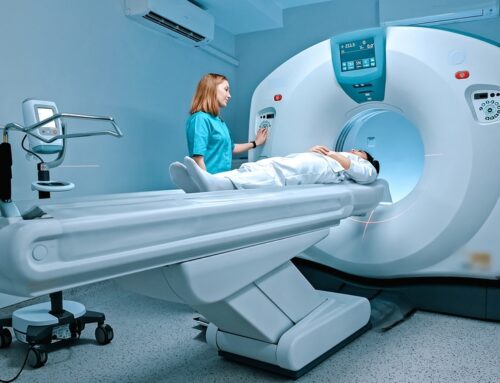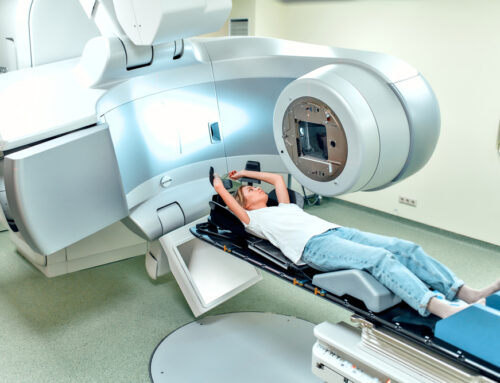Brachytherapy is an innovative form of cancer treatment that offers targeted radiation to fight tumors. This treatment is gaining attention for its precision and effectiveness in addressing specific types of cancers. But when is brachytherapy a viable option, and how does it compare to other radiation therapies?
This blog explores the ins and outs of brachytherapy, its applications, benefits, and considerations to help you better understand this treatment option.
What is Brachytherapy?
Brachytherapy is a specialized form of internal radiation therapy where radioactive material is placed directly inside or near the tumor. Unlike external beam radiation, which delivers radiation from outside the body, brachytherapy targets the tumor with high precision, minimizing exposure to surrounding healthy tissues.
How it Works
In brachytherapy, small radioactive seeds or pellets are inserted into the tumor site using imaging guidance. These radioactive sources emit radiation over a specific period, effectively destroying cancer cells while sparing nearby healthy tissues. The duration and intensity of the treatment depend on the type and stage of cancer being addressed.
Conditions Treated with Brachytherapy
Prostate Cancer
Brachytherapy is one of the most common treatments for localized prostate cancer. It involves placing radioactive seeds in the prostate gland to deliver a concentrated dose of radiation. This method is particularly effective for early-stage prostate cancer and has shown excellent success rates.
Breast Cancer
For breast cancer, especially following a lumpectomy, brachytherapy can be used to deliver radiation directly to the site where the tumor was removed. This localized treatment reduces the risk of recurrence and spares healthy breast tissue from unnecessary radiation exposure.
Cervical Cancer
Brachytherapy is a vital component of treatment for cervical cancer, often used alongside external beam radiation therapy (EBRT). The internal radiation helps target the tumor with precision, making it an essential tool for managing this type of cancer.
Skin Cancer
Certain types of skin cancers, particularly non-melanoma varieties, can be treated with brachytherapy. This approach allows for targeted treatment of cancerous lesions while preserving the surrounding healthy skin.
Other Cancers
Brachytherapy is also used to treat other cancers, such as head and neck cancers and ocular (eye) cancers. Its versatility makes it a valuable option in cases where targeted radiation can maximize treatment outcomes.
Advantages of Brachytherapy

Precise Targeting
One of the most significant benefits of brachytherapy is its precision. The radiation is delivered directly to the tumor site, minimizing exposure to healthy tissues and reducing the risk of collateral damage. This level of targeting sets brachytherapy apart in the debate of brachytherapy vs radiation from external beams.
Minimally Invasive
Compared to other radiation therapies, brachytherapy is minimally invasive. The placement of radioactive seeds or pellets requires minor surgical procedures, which typically result in faster recovery times and reduced discomfort for patients.
Shorter Treatment Time
Brachytherapy often requires fewer treatment sessions than conventional radiation therapy. Depending on the type and stage of cancer, some patients may complete their treatment in just a few days.
Fewer Side Effects
Because of its targeted nature, brachytherapy radiation side effects are generally fewer and less severe than those associated with external beam radiation. Patients may experience less fatigue, skin irritation, and damage to nearby organs.
Disadvantages of Brachytherapy
Potential for Side Effects
While brachytherapy is known for its reduced side effects, it’s not entirely without risks. Patients may experience localized discomfort, skin irritation, and temporary fatigue. In some cases, the radioactive seeds may cause tissue damage at the implantation site.
Not Suitable for All Cancers
Brachytherapy is not universally applicable. Its effectiveness depends on the cancer type, location, and stage. For instance, advanced or widespread cancers may require alternative treatments like systemic chemotherapy or external radiation.
Requires Careful Planning
The success of brachytherapy relies on meticulous planning and precise placement of radioactive sources. This requires a skilled medical team and advanced imaging techniques, which may not be available in all treatment centers. At Northwest Cancer Clinic, we are industry leaders in brachytherapy as well as external beam radiation and have invested in state-of-the-art equipment to get our patients the best results.
Determining Suitability for Brachytherapy
Consultation with a Radiation Oncologist
Determining whether brachytherapy is the right option involves consulting with an experienced radiation oncologist like Dr. Juno Choe, MD.. He will evaluate your medical history, cancer type, and overall health to provide a tailored recommendation.
Comprehensive Evaluation
A thorough assessment, including imaging tests such as CT scans, MRIs, or ultrasounds, is essential to determine the suitability of brachytherapy. This evaluation helps ensure accurate placement of the radioactive material and maximizes treatment effectiveness.
Patient Choice in Cancer Care
Northwest Cancer Clinic offers specialized treatments and personalized care that larger clinics often can’t provide. We’re committed to making your treatment experience as positive and supportive as possible. We’ll face your cancer diagnosis together. Contact us.






